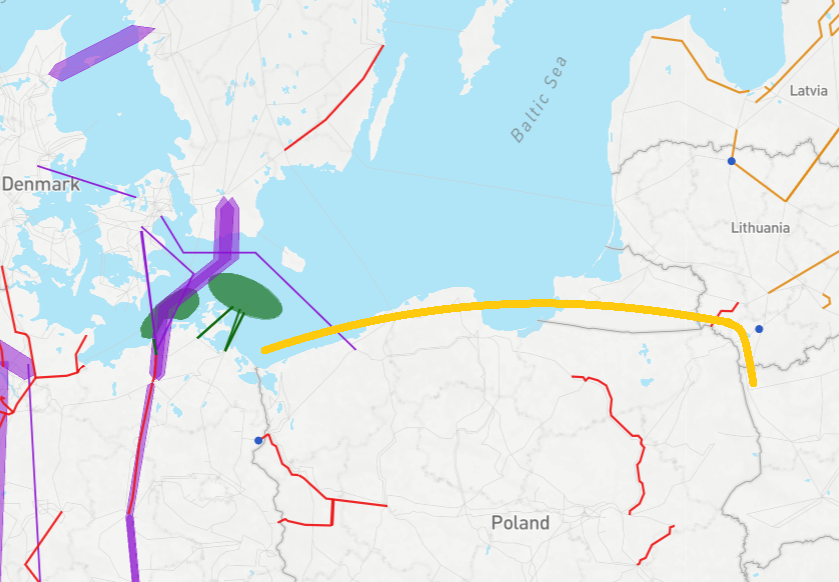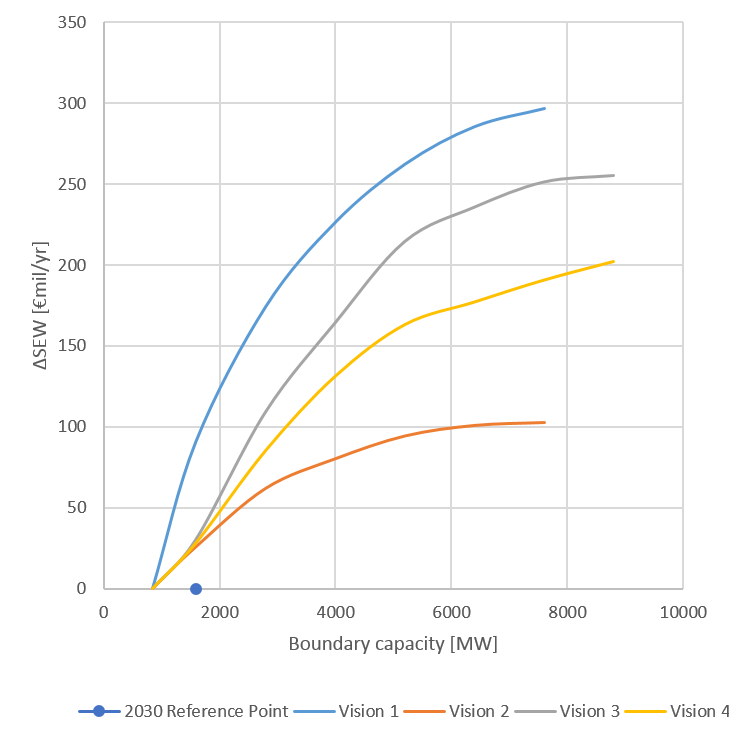Nordic/Baltic to Continental Europe East
Enhancing market flows between North and South
The drivers for investments in this region are to decrease price-differences between the Nordics/Baltics and the Eastern part of the Continental system as well as to decrease overall CO2-emissions.
TYNDP findings

The analyses show a large potential for decreased CO2-emissions when integrating Nordics with Continental Europe East. However, the emissions are dependent on the Visions. Low CO2-prices lead to increased coal-fired production hence increased emissions.
Welfare and Capacity

Nordics/Baltics towards Continental Europe East
Detailed TYNDP project CBAs show that the average SEW contributions per project across this boundary range from 35 to 80 MEuro/year. This corresponds to about 50 MEuro/year per additional GW of transfer capacity.
Interconnection target for 2030
Making the balance between social welfare gain and infrastructure investment costs for increasing levels of interconnection, the optimal level of interconnection ranges from 1 GW to 2,5 GW between the Nordics/Baltics and the Continental Europe East. Compared with the present and planned investments this shows a potential for further projects.
The common planning studies also identified that extra capacity between Sweden and Poland showed potential from a socio-economic welfare point of view. This cross-border was, however, not nominated to TYNDP 2016 because there are already several interconnectors between southern Norway and southern Sweden to the continent and further studies are needed to verify the technical feasibility of additional interconnections.
Projects assessed Project 123 - LitPol Link Stage 2 - GTC PL/LT: 1000 MW GTC LT/PL: 500 MW Project 234 -DKE-PL-1 - GTC contribution PL-DKE: 600 MW GTC contribution DKE-PL: 600 MW